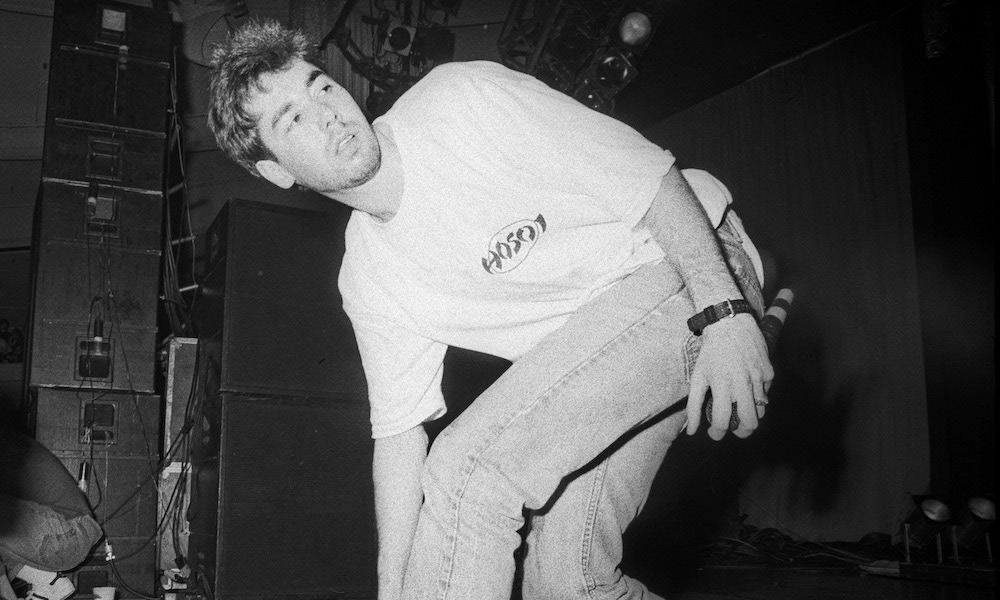There is an electrical box on the roof of the famous Capitol Records building on Vine Street in Hollywood. On the inside of this electrical box door, the letters “MCA” – the nickname of Beastie Boys’ Adam Yauch – is scratched out of the paint. The culprit behind this brazen act of vandalism left his mark both literally and figuratively during his short time on this planet as a veritable Renaissance man of hip-hop.
Born on August 5, 1964, Yauch was one-third of one of the most revered rap/punk/rock/funk/anything-you-can-think-of groups, a humanitarian, and a director/producer of music videos and films. “There was a real joy to Yauch, even in the earliest days,” said Tim Sommer, whose WNYU radio program Noise The Show was the very first to play the Beastie Boys during the early 80s when they were an underground punk band. “He went out of his way to be open-hearted, embracing, witty.”
Listen to the best of Beastie Boys on Apple Music and Spotify.
One of the things that set Adam Yauch apart from his bandmates Mike Diamond (Mike D) and Adam Horovitz (Ad-Rock) was his uncanny ability to absorb information and apply it to real life. He was a tech wiz from an early age, having blown up his backyard fence as a child by hand-building a detonator inspired by Road Runner cartoons.
In Beastie Boys Book, Horovitz remembers, “Yauch was on to tape loops before ‘You should loop that’ was a ubiquitous phrase. He told me that he’d heard about Hendrix and Sly Stone doing tape loops and he wanted to try it. Where did he hear about it? There was no Google or YouTube.”
In the days before samplers were able to store more than a few seconds of music at a time, Yauch’s makeshift reel-to-reel tape loop of the drum intro from ‘When The Levee Breaks’ by Led Zeppelin formed the basis of “Rhymin And Stealin,” the first song on the Beasties’ 1986 debut album, Licensed To Ill , which went on to sell over 10 million copies.
After moving to Capitol Records and releasing the 1989 sample-based masterpiece Paul’s Boutique, Beastie Boys began to reincorporate live instrumentation into their recordings, weaving their New York hardcore punk roots into the hip-hop sounds of the time. Adam Yauch strapped on his bass again and formulated the main hooks for crowd favorites “Gratitude,” from their 1992 album Check Your Head, and ‘Sabotage’ from Ill Communication in 1994.
‘His self-confidence was both necessary and contagious’
The group’s records were now self-produced, and studio experimentation became an obsession for Yauch. He concocted the perfect plan to achieve the massive drum sound on Check Your Head by building a ten-foot-long tube out of cardboard boxes and taping it to the bass drum. He then strategically placed three mics inside the tube. “Who thinks of things like this? Adam Yauch, that’s who,” recalls Michael Diamond in Beastie Boys Book. “His self-confidence was both necessary and contagious. That big drum sound, made from the magic of cardboard, is what you hear on ‘Pass The Mic.’” Adam Yauch’s world outlook was evolving. He made a point of distancing the group from some of their Licensed To Ill imagery on Ill Communication’s ‘Sure Shot’ with the verse:
I want to say a little something that’s long overdue
The disrespect to women has got to be through
To all the mothers and the sisters and the wives and friends
I want to offer my love and respect to the end
Spirituality, faith, and Buddhism
He also began traveling to India and Nepal extensively in the early 90s, befriending exiled Tibetans who told him about their persecution by the Chinese government. Yauch, who converted to Buddhism soon thereafter, sought to spread the word by setting up the Tibetan Freedom Concert – a series of massive annual benefit shows starting in San Francisco in 1996, with some of the biggest names in music (U2, Red Hot Chili Peppers) performing alongside Buddy Guy, Biz Markie.
“He once told me that the main draw to him about the [Tibetan Buddhist leader] Dalai Lama was that he was a funny dude,” Horovitz said of the other Adam. “Obviously there were other reasons he was drawn to spirituality, faith, and Buddhism, but the funny-dude part made perfect sense to me, coming from Yauch.”
Who is Nathanial Hörnblowér?
Nathanial Hörnblowér, Adam Yauch’s alter-ego, was from the fictitious school of “Swiss new-wave” filmmaking, and dressed in the lederhosen associated with stereotypical Alpine yodelers. He famously crashed the MTV Video Music Awards in full costume, protesting that the Spike Jonze-directed Beastie Boys video for ‘Sabotage’ didn’t win anything, and was jokingly misidentified by R.E.M.’s Michael Stipe as Cyndi Lauper.
In practice, Hörnblowér/Yauch directed about a dozen Beastie Boys music videos as well as their 2006 documentary, Awesome; I F__kin’ Shot That! He founded Oscilloscope Laboratories as a recording studio in 2002 (Le Tigre, Phoenix and personal heroes Bad Brains made records there) and then as an independent film company and distributor in 2008 with THINKFilm executive David Fenkel. Yauch directed the documentary Gunnin’ For That #1 Spot that year, which followed the lives of the top eight high-school basketball players in the US. Oscilloscope continues on, well after Yauch’s 2012 passing.
‘A once-in-a-life-time type of friend’
In 2013, the Palmetto Playground in Brooklyn Heights was renamed Adam Yauch Park, after one of the neighborhood’s most influential residents. In Beastie Boys Book, Horovitz described his bandmate as the rare type of friend who “gets you motivated”:
“The one that not only gets themselves going and doing great things but says: we should all get together and do this. And then he does it. Adam Yauch was that type of friend. A once-in-a-lifetime type of friend. The friend that makes it happen. The friend that inspires you to go big.”
Looking for more? Discover 15 Beastie Boys facts you need to know.



